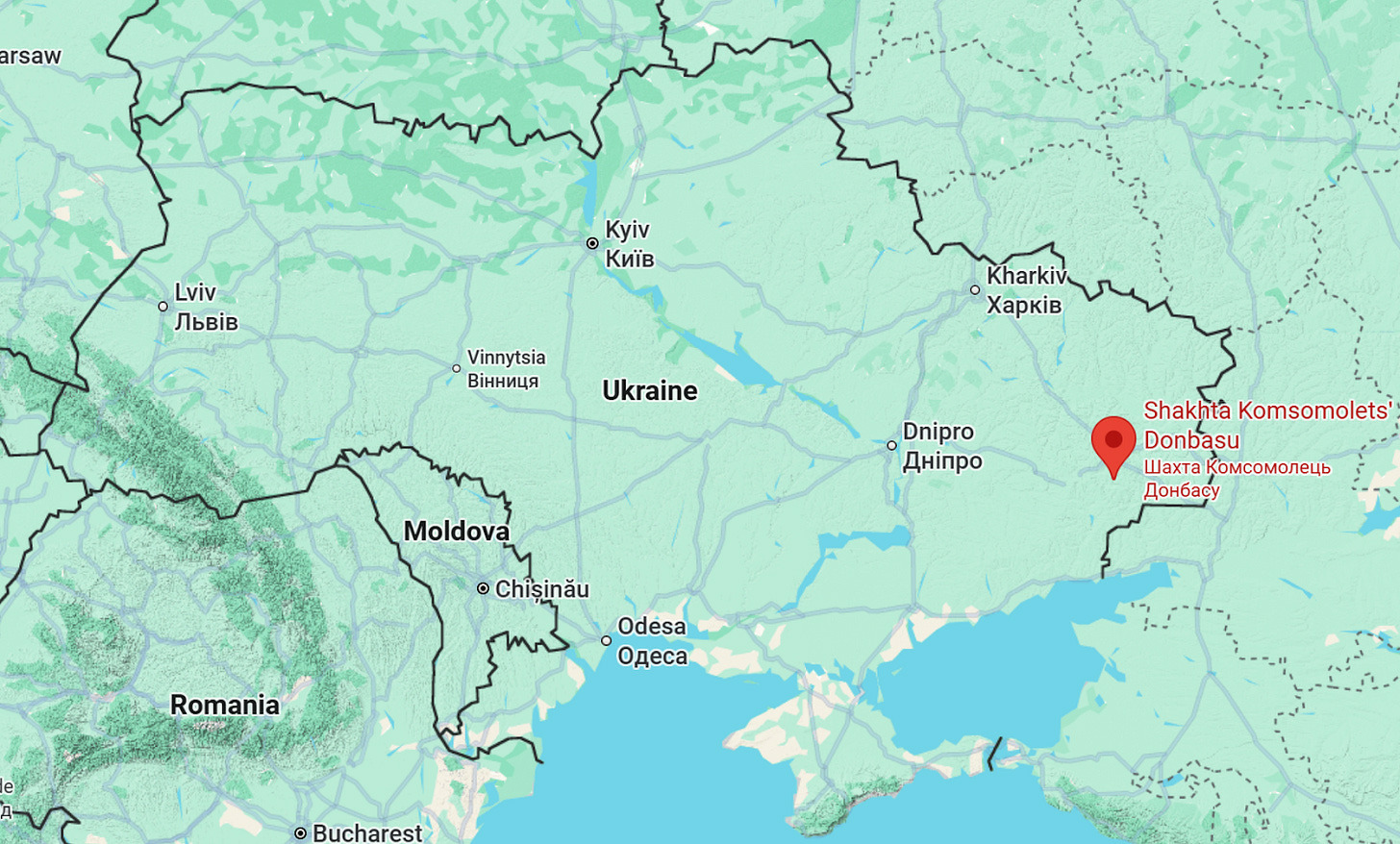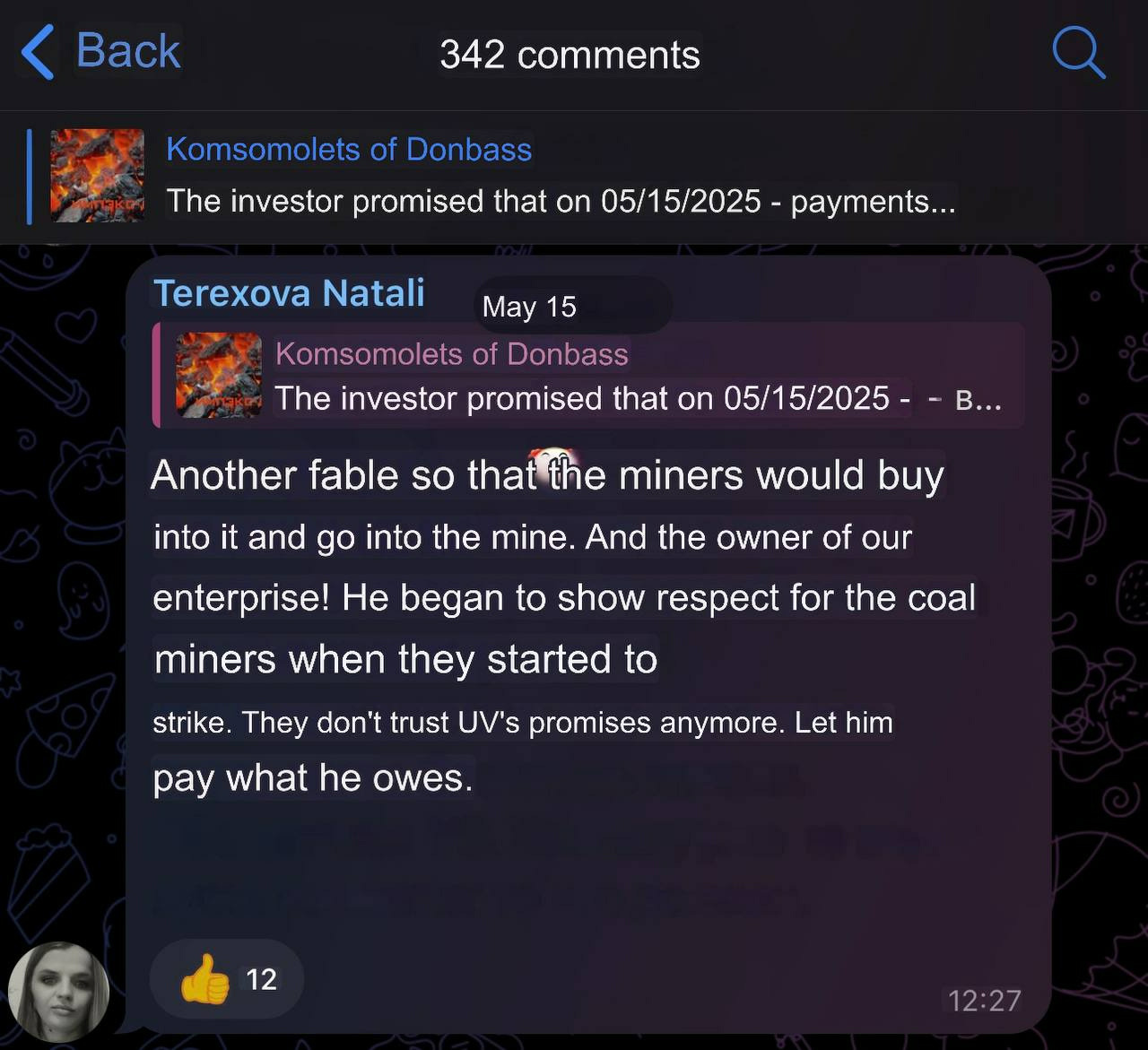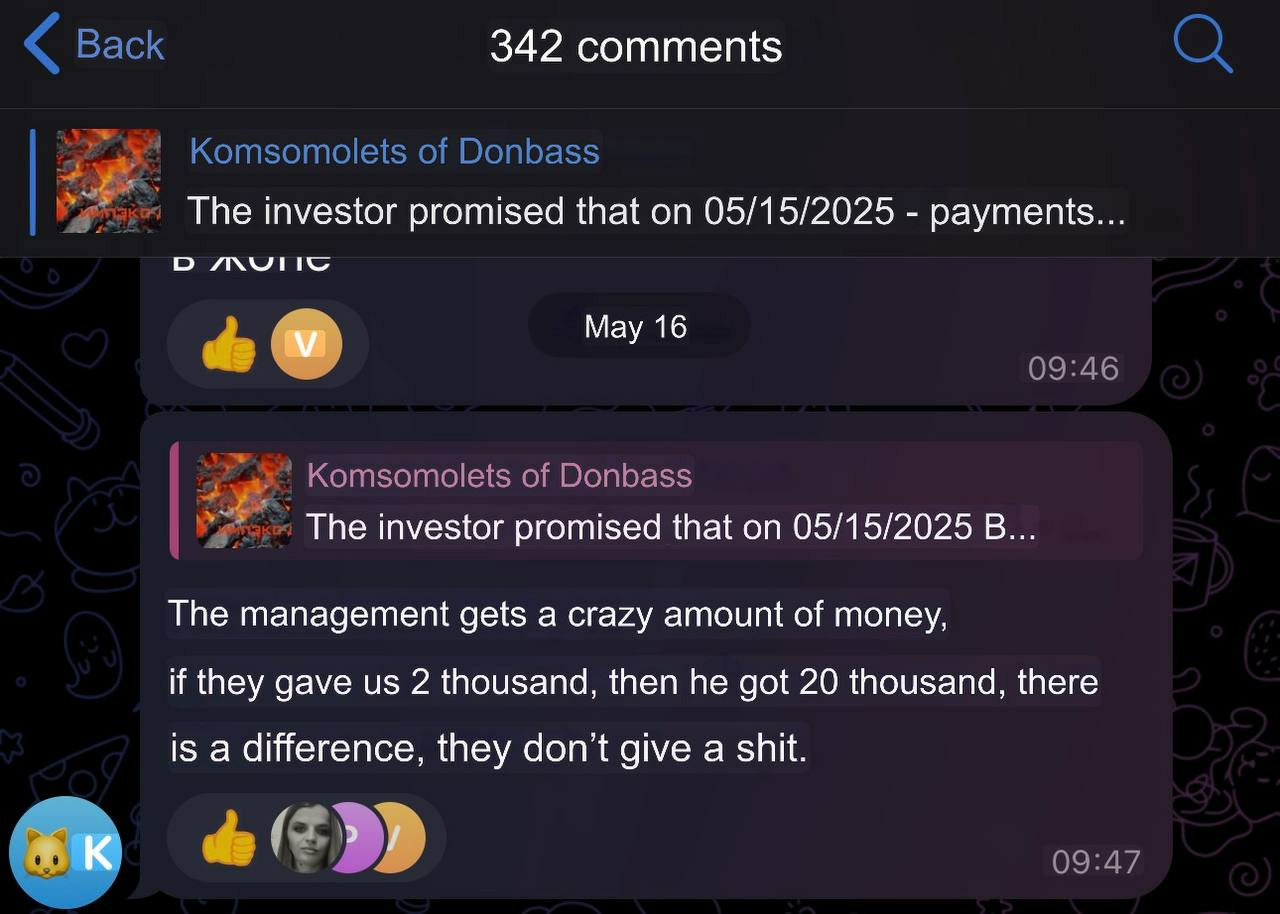Editor’s note: These investigations take a ton of time, resources and brainpower!
Investigations have always been the costliest part of journalism because we can’t just churn them out like commodity news in other organizations – we have to carefully probe, find connections and develop the story.
Help us to do just that! Upgrade today or help us with the tip jar!
For more than a decade, Russia has been destroying not only the lives of Ukrainians above ground, but also those beneath it.
One of the biggest victims of the war is the miners, who spend most of their time underground extracting the mineral wealth of Ukraine. According to Forbes, Ukraine boasts an estimated $14.8 trillion in mineral resources, 62 percent of which is in coal.

Since 2014, Russia has consistently been taking over Ukrainian mines. As of 2022, Russia had seized 63 percent of Ukraine's coal deposits.
Russia has started illegally exporting coal for resale at some mines. This coal is produced, sold (often to foreign buyers), and then physically transported by Russian ships from the occupied port of Mariupol.
The Counteroffensive has established that Russia has used three vessels — ALFA 1, ALPHA HERMES and VIKTORIA V — to operate on the occupied territories and export coal illegally. Although Moscow is deliberately trying to hide the means of its crimes, in 2024-2025 Russia exported more than 60,000 tons of coal via those vessels.
This is not simply alleged looting — these are real, traceable logistics operations with identifiable ships.
The Counteroffensive also found that one of the biggest regional coal exporters – Don Coal Trade House, operating five mines in the occupied Luhansk region – systematically shipped coal from the occupied territories to Turkey in 2024. This occurred even though Turkey has formally condemned the Russian occupation.
This systematic campaign by Russia is a deliberate strategy of economic exploitation of occupied territories, which violates international law enshrined in The Hague Conventions.
Such actions – and ongoing impunity for Russia – incentivizes dictatorships to revive colonial practices, in which occupied territories become a raw material base for enriching far-off metropolitan areas.
Russia's illegal extraction of minerals
The Russian invasion in 2014 marked the beginning of the end for the mines in eastern Ukraine. Due to constant attacks and occupation of the Luhansk and Donetsk regions, only a small number of mines that were seized continued operations.
However, the Russian-aligned occupation administrations still considered it a net positive. After establishing a foothold in the region, they resumed coal production and export.
The Russians began to actively revive this sector in 2024. Officials announced the arrival of investors from Russia, and Putin personally promised to make every effort to boost the industry:
"We remember the great merits of the pioneer miners of Donbas and will do our best to revive coal mining, metallurgy and other industries here," he said.
By 2024, approximately 15 Ukrainian mines in the occupied Donetsk and Luhansk regions were leased to Russian companies. The two largest investors were Impex-Don and Don Coal Trade House.
Impex-Don manages four mines in the Donetsk region, where it is also registered. It is owned by Imperial, a company led by Viktor Gryzlov. He is a member of a family that controls the port in Rostov-on-Don, from where shipments are sent to countries in the Black Sea and Mediterranean basins.
Don Coal Trade House was founded in Rostov-on-Don in 2020 by Oleg Knyazev, who served as deputy governor of a Russian region from 2021 to February 2024.
These companies and other leaseholders promised to invest over $800 million in the seized facilities. Since 2024, the companies have been actively mining coal and selling it to other countries.
The Counteroffensive learned that Don Coal Trade House sold coal from the occupied territories abroad in 2024. In April-May 2024 alone, Don Coal Trade House shipped over 45,000 tons of coal to Turkey, with the total value close to $4 million, according to export-import database records. Turkey purchases this coal because, unlike the U.S. and the EU, it hasn't restricted coal trade with Russia or occupied Ukrainian territories.
The coal was shipped through a company registered in Hong Kong called Green Rabbit Limited. The company does not appear to have a website, registration date or publicly available contact information.
Despite its origin, this company has systematically purchased coal from Russian companies. It was also previously used by Russia to export wheat grown in the Donetsk region, records show.
The coal mined in Donbas was physically exported via the port of Mariupol, which is actively used to export looted minerals from occupied territories.
In April 2025, Russian vessels entered Mariupol to load coal, according to photos published by the head of the Center for the Study of the Occupation, Petro Andriushchenko.
The Counteroffensive compared photos of the vessel and identified it as the ship Alfa 1. In 2024-2025, Alfa 1 exported more than 20 thousand tons of coking coal, equal to more than two fully loaded vessels.

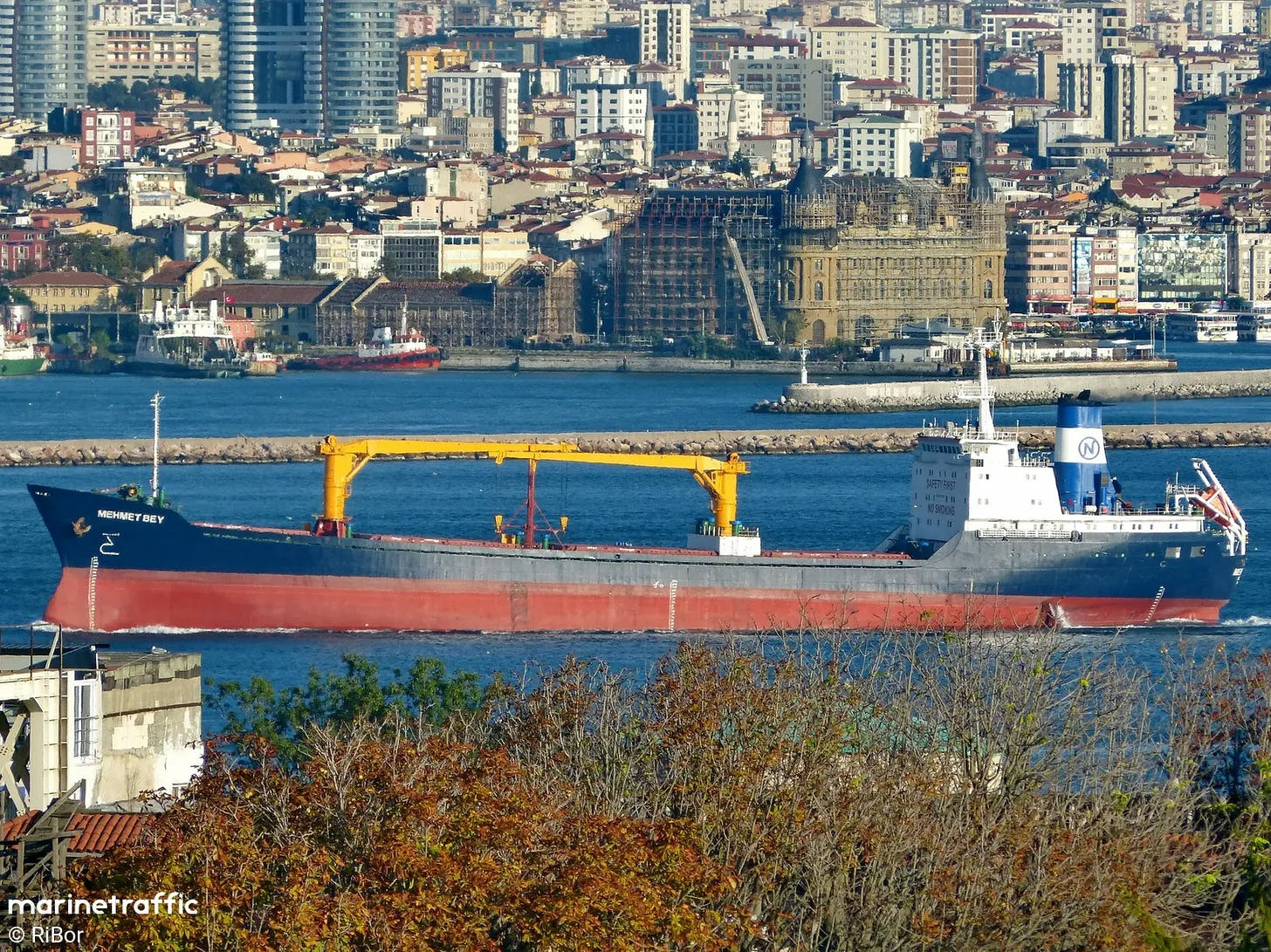
At the same time, as seen in Andriushchenko's photos, two more Russian ships entered the port of Mariupol. The Counteroffensive identified them as ALPHA HERMES and VICTORIA V.
In 2024-2025 these two vessels exported more than 40,000 tons of coking coal from the port in Mariupol, according to Ukrainian intelligence.
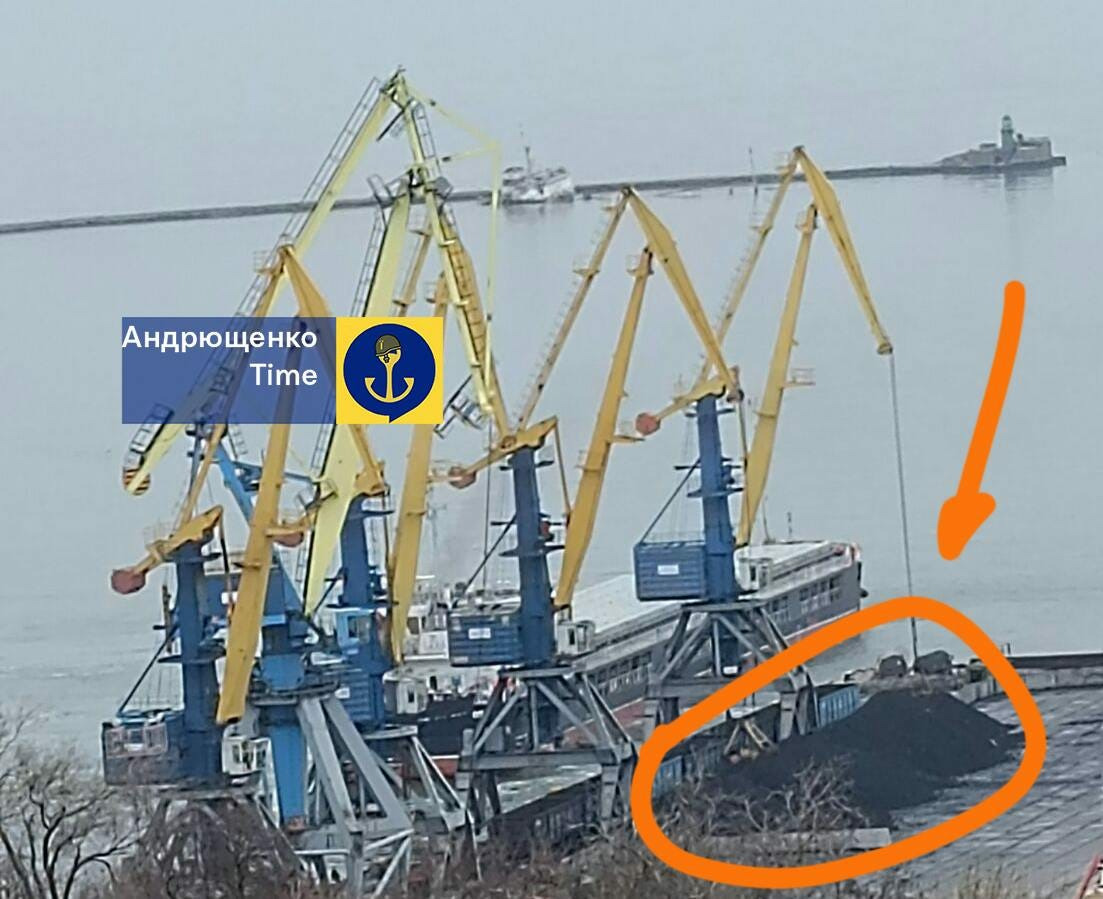
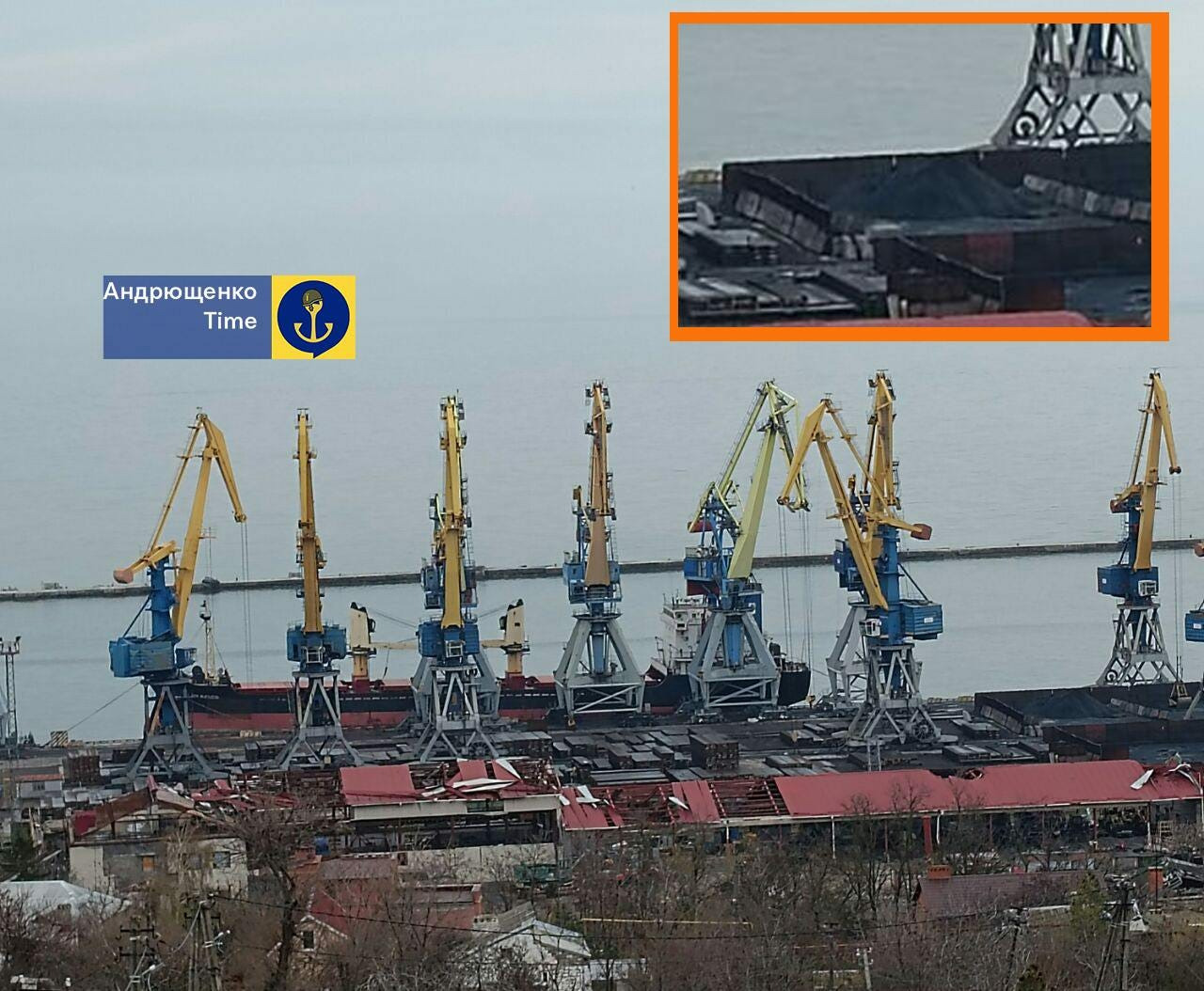
Vessel tracking sources don't show them entering Mariupol ports, as Russians deliberately disable ships' AIS (Automatic Identification System), making them invisible to outside trackers in a bid to hide the illegal presence of ships in territorial waters.
Both ALPHA HERMES and VICTORIA V belong to Russian companies, according to maritime records. In 2023, the United States imposed sanctions on ALPHA HERMES.
The export of Ukrainian coal isn't just regular commerce for a few businesses, but a deliberate Kremlin policy to quietly exploit Ukraine's mineral wealth.
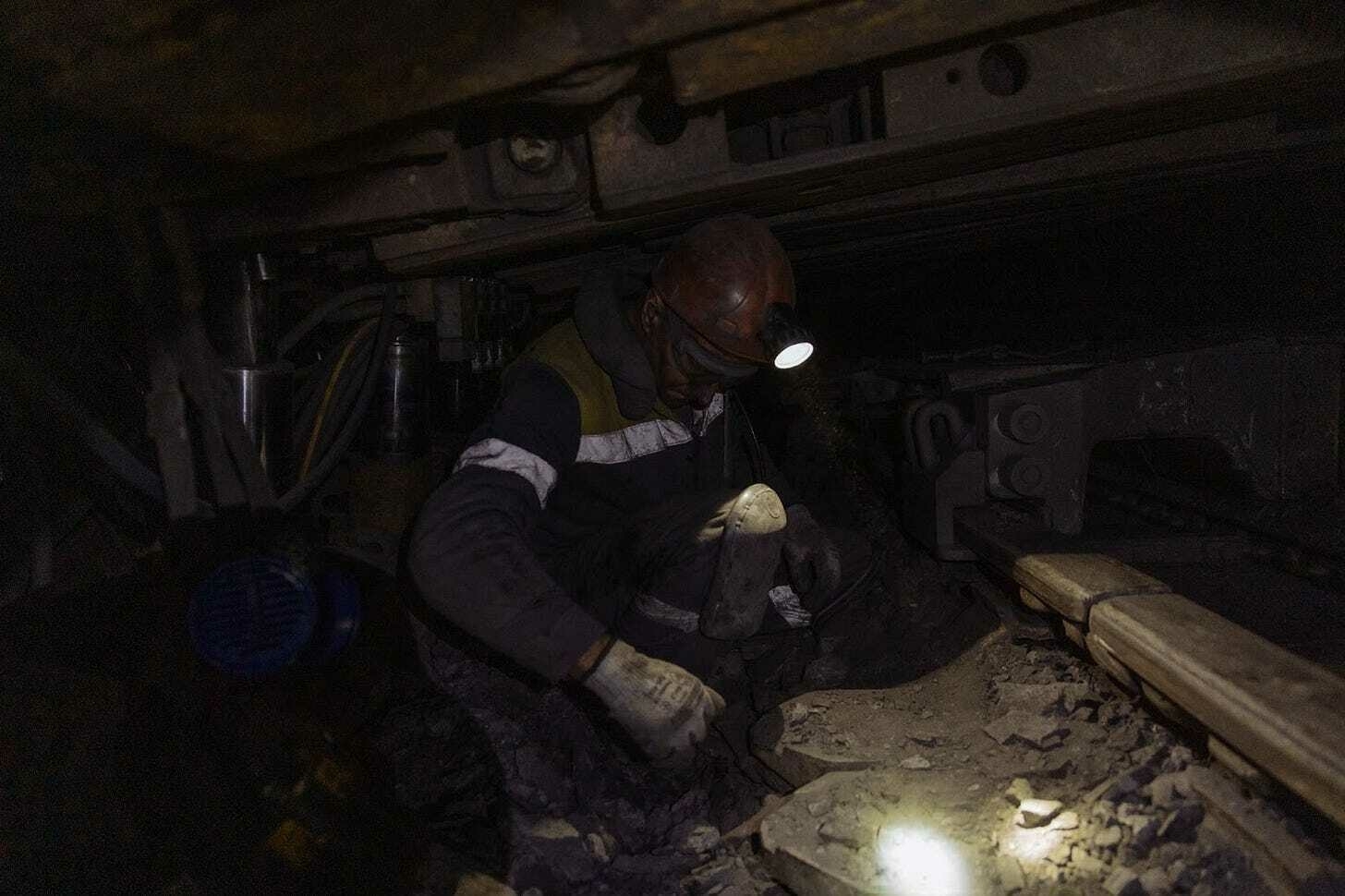
How Russia abuse mine workers
Russia is attempting to conceal not only the illicit export of coal, but also the poor treatment of the miners who extract it.
When Russia occupied this part of eastern Ukraine more than 10 years ago, it promised prosperity and improved living conditions for Ukrainians. But in reality, dozens of mines in Donbas were closed or flooded, and theft appears to be a common practice.
One of the mines from which Russians produce coal is Komsomolets Donbassa. It was commissioned in the 1980s and named after the Soviet youth organization whose members built it.

Impex-Don, which manages four mines in Donetsk, promised to invest in equipment modernization and increase the number of employees as part of an effort to extract more Ukrainian coal and profit from its sale.
Despite these lofty promises, however, the company showed a complete disregard for its own employees. By scouring feedback from miners on Russian-language social media sites, The Counteroffensive was able to piece together a disturbing portrait of how the miners have been treated.
Under Telegram posts published by Komsomolets Donbassa mine, which Impex-Don manages, employees complained about not being paid on time. Some miners even publicly refused to keep working.
The saga apparently went on for months, with the Komsomolets Donbassa mine promising on May 15 to pay out the remainder of the salary still owed to employees for March, and employees still reporting late payments after that on its Telegram page. Partial payments that were insufficient for even basic needs led some employees to threaten to strike over unpaid wages.
Beyond exploiting existing resources, Russia is preparing to mine other minerals in occupied Ukrainian territories, including manganese, which can be used to improve the quality of steel in armored vehicles.
How Russia is destroying Ukraine's coal industry
By the end of October 2024, Ukraine controlled only 24 mines out of 145 that existed in 2014, according to Mykhailo Volynets, a senior miners' union official.
The rest are under Russian occupation.
Numerous miners told The Counteroffensive that Russia was looting Ukrainian mining equipment. Volynko, the head of the Independent Trade Union of Miners of Donbas, said the Russians set up four smelters on the border with the Rostov region, to which they brought stolen equipment and melted it down.
The Russian military itself aided in the transport and looting of equipment, Volynko said.
Russia is thus delivering a two-pronged blow: physically destroying Ukrainian mines and illegally looting the valuable infrastructure, and stealing while simultaneously selling abroad mineral resources that rightfully belong to Ukraine.
With an eye on ever-increasing extraction, Russia is demonstrating its true aim: prolonging the war to expand its control over profitable territories it can plunder.
In this time of great uncertainty — and unstable American support — it means that the situation on the ground is very dangerous. Your contributions help us get the body armor, medical gear, and supplies we need to stay safe.
Show your support by contributing to our tip jar - funds go towards keeping us safe and ensuring our work continues.
NEWS OF THE DAY:
TRUMP’S CALL FOR RUSSIA TO REJOIN AT G7 SUMMIT AS IT STRIKES KYIV:
Despite a fresh Russian attack on Kyiv, Donald Trump repeated his call to readmit Russia to the G7, calling its 2014 expulsion “a big mistake.” The U.S. President also refused to support additional sanctions unless Europe acts first.
Trump appeared to justify Russia’s 2022 full-scale invasion of Ukraine by linking it to Moscow’s removal from the G8. While Trump praises Putin and his ‘efforts’ for peace, Putin “make[s] the G7 leaders look weak,” Ukrainian foreign minister Sybiha said.
UKRAINE OPENS LITHIUM DEPOSITS TO INVESTORS UNDER U.S.-UKRAINE MINERAL DEAL: On Monday, the Ukrainian government approved access for private companies to develop one of its largest state-owned lithium deposits – the Dobra site in the Kirovohrad region.
Kyiv is preparing bidding recommendations for potential bidders, including U.S.-backed TechMet and Trump’s friend Ronald S. Lauder. The revenues from the extraction would go to a joint U.S.-Ukraine investment fund and later be reinvested in Ukraine’s economy, giving a portion to Washington.
This is the first project and a sign of the implementation of the U.S.-Ukraine mineral deal, signed on May 1, 2025.
DENMARK DEPLOYS ROBOTIC SAILBOATS TO SECURE BALTIC, NORTH SEAS: The Danish military is using uncrewed sailboats to monitor the increasingly tense waters of the Baltic and North Seas. The vessels can detect activity up to 20–30 miles above and below the surface, “going to places ... where we previously didn’t have eyes and ears,” Richard Jenkins, Saildrone founder and CEO, said.
The precaution comes amid growing security concerns, including alleged Russian sabotage, the destruction of at least 11 undersea cables since 2023, increased activity by Russia’s oil shadow fleet, and renewed U.S. interest in the Arctic, including Donald Trump’s eyeing of Greenland.
THE CAT OF CONFLICT:
Today’s cat of conflict is very famous among students of Veronika and Zoriana’s university. Seen on the car, he is just a chill guy.
Stay safe out there.
Best,
Veronika


